Fire Hazards of Insulation Materials
Updated June 21, 2024 . AmFam Team
While the use of insulating materials in buildings has resulted in energy conservation, this use has also created fire and health risks. For example, some insulating materials can contribute to the spread of a fire, while others produce smoke and toxic gases. The amount of insulation in the walls and ceiling/roof of a room can affect the rate of growth of a fire. Insulation will reduce heat transfer to other areas (i.e., rooms), thereby raising the temperature in the fire room. Higher temperatures in the fire room will accelerate the burning of materials in the room, resulting in an increase in the heat released into the room. The greater the amount of insulation, the higher the temperature the fire in the room can be expected to reach.
Insulation may also affect the performance of heat-producing devices, such as electrical wires, cables and electrical fixtures. Insulation installed around the heat-producing device can cause the device to become overheated – if the device becomes hot enough, it can ignite combustible materials in contact with it. Many electrical devices are now Listed* for use with insulation covering them or with specific clearances to the fixture indicated.
Insulating materials may have an adverse health effect when they are handled or exposed to fire. Fires in insulation materials can result in the release of toxic gases and smoke, which can be fatal if present in sufficient quantities. Smoke can create problems for occupants trying to evacuate the fire area. When some materials, such as fibrous glass, are handled, employees and others who come into contact with it may experience skin irritation. Other materials, such as asbestos, can cause numerous disabling or fatal diseases from long-term exposure to airborne fibers. Such exposures are outside the scope of this report.
There are several basic types of material used for thermal insulation. They are organic-based, mineral-based, and plastic-based. This report provides an overview of these insulating materials, the hazards of the materials, and loss control considerations for their use.
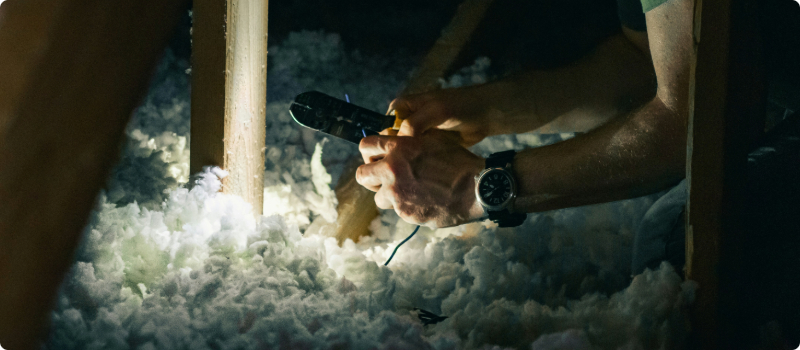
Organic-Based Insulation
Typical organic insulations are wood, paper, cork, and cotton. These materials collectively are referred to as “cellulose insulation.” Cellulose is one of the oldest insulation materials used in construction and serves three primary functions. First, it is used as a thermal insulation to inhibit heat movement between the building and the outdoors. Second, cellulose insulation is used as an acoustical barrier to reduce sound transmission between rooms in a building. And finally, spray-on cellulose insulation is marketed as a fire-retardant coating material, sometimes referred to as a thermal barrier, intended to delay the ignition and slow the surface burning rate of combustible interior finish materials.
Cellulose insulation is typically manufactured from recovered paper fiber (e.g., magazines, newspapers, etc.) that is treated with one or more fire-retardant chemicals. Cellulose fiber materials are "hygroscopic;" that is, they will readily take up and retain moisture under the proper conditions of temperature and humidity and, once wet, are slow to dry out. The development of fungi is primarily prevented by controlling the moisture content of cellulose insulation through the proper use of vapor barriers. However, it is possible to eliminate the cellulose food supply for fungi by treating it with certain substances that are toxic to fungi. When treated with inhibitors for moisture-proofing and fire-retardance, the insulation value decreases slightly. As the material is compressed for rigidity and structural strength, its insulation value decreases. Organic insulations should never be used in contact with soil or in moist conditions.
Cellulose insulation made of wood, paper, cork, and cotton sustain combustion when dry. Even when slightly damp, the material may smolder, creating a condition where the insulation can easily burst into flames. When cellulose insulation does catch fire, it is sometimes difficult to completely extinguish the fire. Fires originating in, or spreading to, concealed spaces can lead to large losses because not only can the fire burn for some time undetected, but also firefighting efforts can be severely hampered by the limited accessibility to these spaces. As the fire consumes the oxygen in a concealed space, large amounts of super-heated, flammable gases develop. This oxygen-based fire will continue to smolder until some event, such as opening a door or hatch, introduces fresh air into the space. When oxygen enters this concealed space, the super-heated gases ignite, resulting in a backdraft or smoke explosion.
Because all cellulose-insulating materials are inherently combustible, one of the common steps in the manufacturing process is to treat the cellulose fibers with one or more fire-retardant chemicals. Fire-retardant chemicals are required by the Consumer Product Safety Commission (Opens in a new tab) (CPSC) to be added to these materials to reduce the flammability hazard. Unfortunately, the chemical additives tend to break down with time and lose their efficacy. One of the chemicals often used in cellulose insulation is ammonium sulfate. When ammonium sulfate thermally decomposes or becomes wet, it produces sulfuric acid, which is corrosive to metals. For this reason, many installers will only use cellulose chemically treated with boric acid and borax, not ammonium sulfate, for wet-spray applications. There is anecdotal evidence of pipes and metal fasteners suffering the effects of corrosion when in contact with wet cellulose containing ammonium sulfate. Some manufacturers now add corrosion inhibitors to the chemical mix to help prevent this occurrence. The risk control measures require adherence to installation and recommended drying times to minimize the chance of loss.
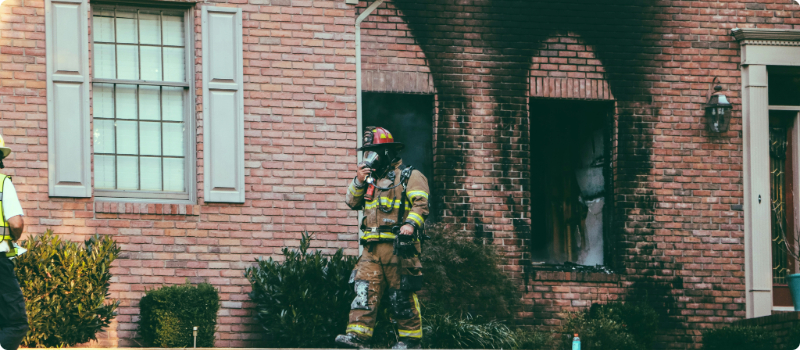
Risk Control Considerations
The CPSC safety standard 16 CFR 1209, Interim Safety Standard for Cellulose Insulation, provides the flame resistance and corrosiveness requirements for cellulose insulation. The standards “requirements are intended to reduce or eliminate an unreasonable risk of injury to consumers, from flammable and corrosive cellulose insulation. The standard also provides minimum labeling requirements for cellulose insulation, including that the material be labeled as meeting the “amended CPSC standard for flame resistance and corrosiveness of cellulose insulation." While most building codes require cellulose insulation to meet the amended standards, the codes generally require that minimum clearances be maintained between the insulation and heat sources, such as stovepipes, to prevent heating of the material.
There are documented cases of corrosion from the use of ammonium sulfate cellulose insulation. Another concern is the undesirable impact on indoor air quality, specifically an ammonia odor problem if the insulation is not adequately dried prior to installing drywall. The drying time varies with environmental conditions.
Climatic conditions are a critical factor for achieving dry-out; industry advice suggests that wet-spray applied cellulose be able to dry to the exterior in northern (cold/dry) climates. This entails the use of moisture-permeable exterior framing and sheathing, such as 1x dimensional lumber and asphalt-impregnated fiberboard. For southern (warm/wet) climates, the opposite is true. The cellulose must be allowed to dry to the interior. One way to achieve this is to eliminate a vapor barrier and install the gypsum board panels/finishes airtight. Many installers use dehumidifiers and allow for proper dry-out to occur by leaving the wet cellulose insulation exposed for at least 48 hours. Low moisture content (50% maximum by dry-weight content) is also employed to minimize dry-out problems. Fiberized cellulose insulation, with a binder, has a moisture content as low as 28% (dry-weight), and is therefore favored for wet-spray applications.
See Industrial Hygiene Report IH-20-27, Cellulose Insulation, for additional information.
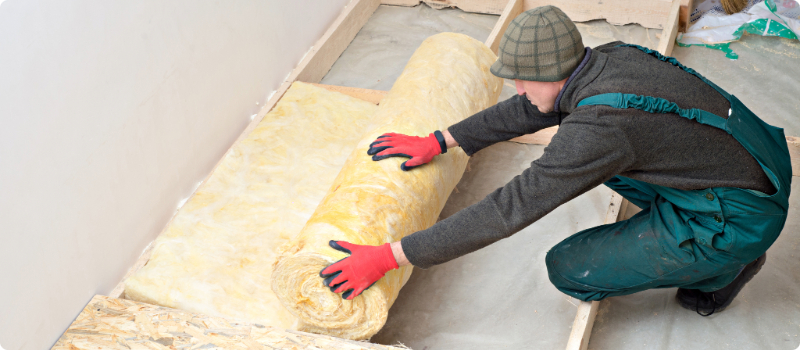
Mineral Insulations
Mineral-based insulations may be comprised in whole or part of vermiculite, calcium silicate, asbestos, silica, fibrous glass, mineral wool, or other similar materials. Mineral-type insulations do not absorb moisture but can hold it in suspension, releasing it readily when subjected to heat or ventilation. The material's insulation value rapidly decreases when compressed. Contact with the soil or moisture is not advisable due to its permeability to moisture. Mineral insulation generally is rot-proof, vermin-proof and low in combustibility. It is used in boilers, furnaces, heated pressure vessels, some electrical appliances, as well as building insulation. Mineral insulation runs the gamut from products that have little effect on consumers to those with potentially serious toxicological effects.
There are two primary health considerations associated with the use of asbestos and fibrous glass: irritation of the skin from touching the material and irritation of the lungs due to breathing particles of the insulation suspended in air. In contrast, reports on losses associated with the other mineral insulations, such as vermiculite, perlite and mineral wool, have been limited. These products are either non-fibrous or have relatively thick fibers that do not easily penetrate the skin and are not readily inhaled.
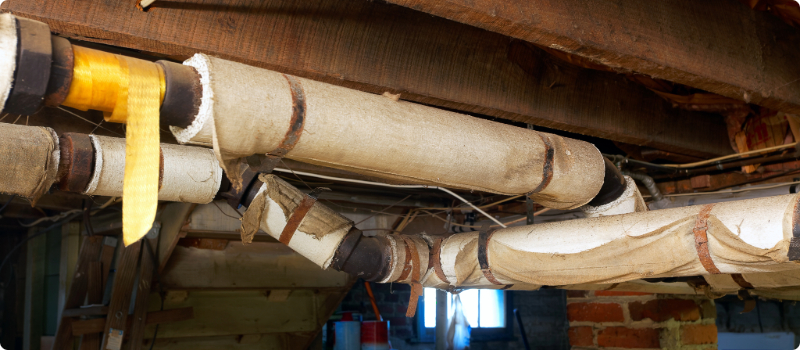
Asbestos. Asbestos is a widely used, mineral-based insulating material that is resistant to heat and corrosive chemicals. Since 1972, the Occupational Safety and Health Administration (Opens in a new tab) (OSHA) has regulated asbestos exposure in general industry, which has resulted in a significant decline in the use of asbestos-containing materials. In buildings built before 1980, all sprayed-on and troweled-on insulating materials should be considered asbestos-containing materials unless properly analyzed and found not to contain more than 1% asbestos. Depending on the chemical composition, fibers may range in texture from coarse to silky. Asbestos fibers enter the body by inhalation of airborne particles or by ingestion and can become embedded in the tissues of the respiratory and digestive systems.
See Industrial Hygiene Report IH-20-23, Asbestos – OSHA General Industry Standard, for additional information.
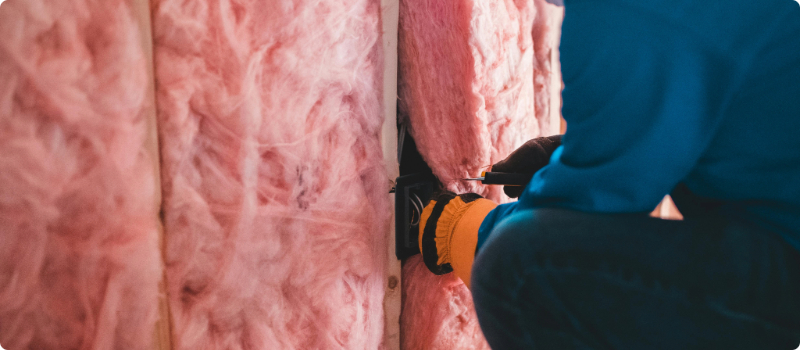
Fibrous glass. Fibrous glass, also called fiberglass, is a manufactured fibrous material that is made from raw materials, such as silicon dioxide and oxides of aluminum, calcium, sodium, magnesium and boron. Studies conducted by the National Institute for Occupational Safety and Health (Opens in a new tab) (NIOSH) have indicated that fibrous glass has been associated with a substantial number of cases of dermatitis and pulmonary infections. Although inhalation of some types of fibrous materials (i.e., asbestos) can lead to disabling or fatal diseases, this has not been indicated with fibrous glass. As such, OSHA regulates airborne fibrous glass under the nuisance dust standard in “Subpart Z” of the General Industry Standards. Skin irritation can occur when workers are exposed to fibrous glass. Many people handling glass fibers for the first time, or after a temporary absence from them, suffer from irritation of the exposed parts of the skin. Fibers of large diameter are more likely to cause irritation by abrasive action, with common locations being the arms, face and neck.
See Industrial Hygiene Report IH-20-21, Fibrous Glass, for additional information.
Risk Control Considerations
While mineral-based insulation materials are non-combustible or low in combustibility, the paper or foil backing surrounding the insulating material may be flammable. Insulation backing materials should be fire-retardant and have a maximum flame-spread rating of 25 when tested in accordance with ASTM E-84, Standard Test Method for Surface Burning Characteristics of Building Materials, published by the American Society for Testing Materials (Opens in a new tab) (ASTM) and as required by UL 723, Standard for Safety Test for Surface Burning Characteristics of Building Materials, published by Underwriters Laboratories Inc. (Opens in a new tab) (UL).
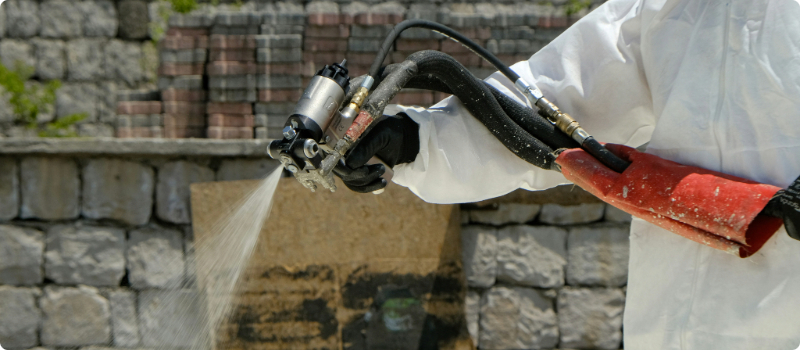
Plasticized Insulations
Plastic foam insulations, such as polyurethane, polystyrene, and urea formaldehyde, offer the best combination of insulation and vapor tightness. They are not subject to decay or damage from vermin and are suited for tight-fitting, non-vented applications, high-moisture conditions, and direct contact with soil. Sprayed polyurethane expands to 30 times its sprayed depth within three seconds, dries within ten seconds, and adheres to most building materials. However, plastic foam insulations can sustain rapid combustion, and their gases can be toxic.
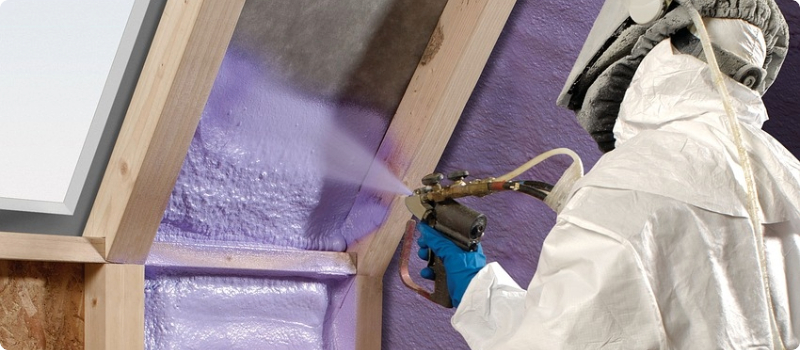
Polyurethane. Polyurethane foam may be formed at a construction site or installed in the form of board stock (see the “Composite Insulations, Structural Insulated Panels” section). When formed at the site, there is a potential for a completed-operations exposure. If the substance is not cured properly, toxic vapors may be formed that can cause irritation to the eyes and the respiratory tract. This possibility only exists during the early stage of the life of the product. Spontaneous ignition of the polyurethane foam is possible due to heat buildup during the curing stage. Polyurethane foams are combustible and create a smoky fire that is difficult to extinguish.
Drums of the material used in foaming operations may build up pressure because of moisture contamination, volatilization of the blowing agent and improper loading. Special containers and handling are needed for shipping.
Polystyrene. Polystyrene, like polyurethane, may be formed at the construction site or can be obtained in board stock. Polystyrene is a transparent, water-resistant and dimensionally stable plastic. When ignited, the substance burns with a very smoky fire that is difficult to extinguish. Polystyrene resins are moderately toxic to humans and are readily absorbed through the skin as well as by the respiratory and gastrointestinal systems. The principal acute hazards from worker exposure to styrene are central nervous system (CNS) depression (Opens in a new tab) and irritation of the eyes, skin and upper respiratory tract. Storage and handling of the product requires special precautions.
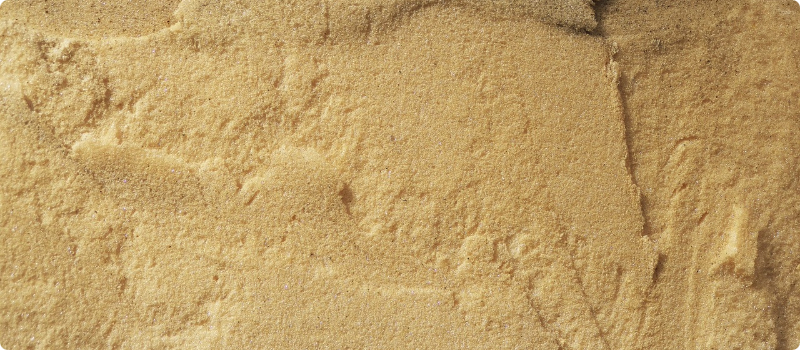
Urea-formaldehyde (UF). UF foam insulation, also referred to as formaldehyde-based foam insulation, means any cellular plastic or thermal insulation material that contains, as a component, chemical formaldehyde, formaldehyde polymers, formaldehyde derivatives, or any other chemical from which formaldehyde can be released. One problem with UF use as a home insulation is that when the substance is improperly formulated, an excessive amount of formaldehyde gas may be released. Exposure to small quantities of this gas may cause burning of the eyes and irritation of the upper respiratory passages. It is also a suspected carcinogen (Opens in a new tab). The CPSC declared, in 1982, that UF foam insulation was a banned hazardous product under Sections 8 and 9 of the Consumer Product Safety Act. The ban was overruled by a federal court; however, it sees very limited use in the United States and remains banned in Canada.
UF is an insulation used only in foam-in-place applications because its fragility makes it difficult to handle. It is light in weight, but its open cellular structure permits higher permeability to liquid than other plastic insulations. Therefore, it is not used in direct contact with liquids or soil. It is considered rot-proof, vermin-proof and is somewhat less combustible than other foam plastic insulators. Its adherence to confining surfaces is weak.
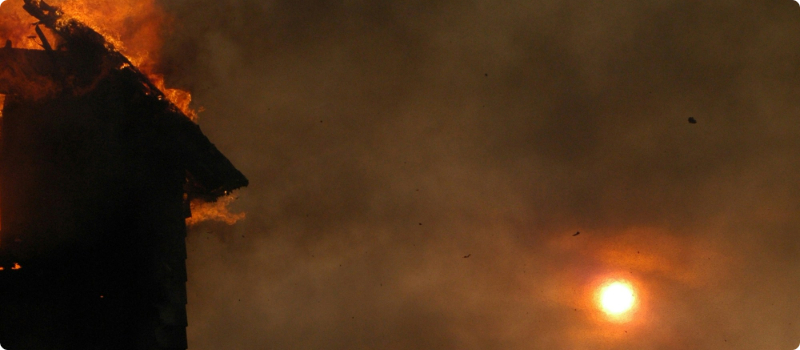
Risk Control Considerations
An examination of the physical and chemical properties of most plastics reveals that they are not intended for high-temperature conditions or exposure to fire. Like most organic compounds, they will burn under certain conditions. The rate of burning is determined by the polymer grouping and the plasticizers, lubricants, fire retardants and other additives in the particular plastic. Foamed plastics generally burn much more rapidly than solid plastics. This is due to the large amount of surface area exposed to air in these sponge-like materials. For the most part, plasticized insulations have higher heat content per unit weight than most materials, thereby intensifying its fire hazard.
An important "loss" characteristic is the potential "melt-out" or destruction of dimensional stability of foamed plastic cores, which may lead to the replacement of many panels if they are exposed to a relatively small fire in a building. The critical temperature in some of these products can be as low as 300°C (575°F), which is a temperature that can be reached very quickly in an ordinary fire. The loss may occur even where the insulation is shielded by other materials.
Another concern is spontaneous ignition of polyurethane foam due to heat buildup during the curing stage. Plastics produce significantly more smoke than other types of insulation materials. When polyurethane and polystyrene burn, they create a very smoky fire that is difficult to extinguish.
Foamed plastic that is injected into wall cavities can help propagate a fire in the wall cavity. Most building codes require that the material have a specific flame-spread rating as determined by using the method described in NFPA 255, Standard Method of Test of Surface Burning Characteristics of Building Materials. Research has shown that a fire will spread more rapidly upward if there is an air space between the wall and foamed plastic.
Sprayed-on urethane insulation (i.e., foamed plastic) is still popular in some areas and is used as an insulating material for ironclad metal buildings and in other types of construction, such as wood-frame. NFPA 5000, Building Construction and Safety Code, provides information on the use of “Foamed Plastic” in subsection 10.
NFPA 5000, Subsection 10.4.3 prohibits “cellular or foamed plastic materials” from being used as an “interior wall and ceiling finish” unless certain conditions are met, as outlined in Subsections 10.4.3.1 and 10.4.3.2. These conditions include:
- Demonstration, by large-scale fire testing, that the material meets the flammability ratings’ requirements for the intended occupancy.
- When used as part of trim material, it must not total more than 10% of the wall or ceiling area; and provided that it is not less than 20 lbs/ft3 (320 kg/m3) in density, be limited to 0.5 in (13 mm) in thickness and 4 in (100 mm) in width, and comply with the requirements for Class A or Class B interior wall and ceiling finish, as described in 10.3.2; however, the smoke rating is not limited.
The International Building Code (IBC), published by the International Codes Council (ICC), provides similar requirements in Chapter 26, Subsection 2603. Included is the requirement in Subsection 2603.4 for the foam to be separated from the interior of the building by an “approved thermal barrier;" with limited exceptions.
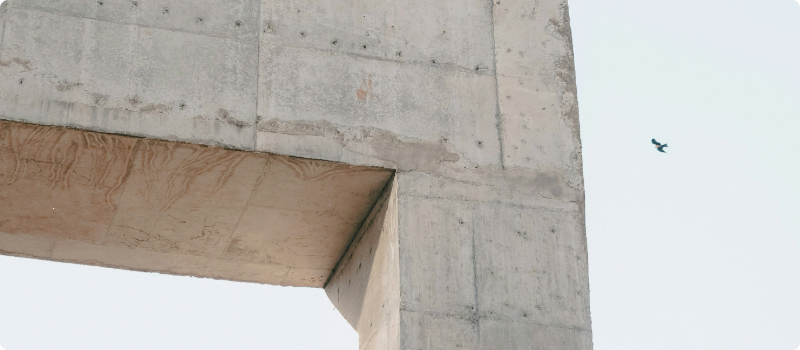
Composite Insulations
Composite-insulating products, such as structural insulated panels, insulating concrete forms, and exterior insulation and finish systems, consist of one or more of the three types of insulation enclosed by other materials that provide mechanical strength or improve its appearance. Many applications for insulation require a composite form. Composite products have distinct characteristics that may differ from the basic characteristics listed for the three primary types of insulation. Compressed or laminated insulations, such as the organic-based materials, usually are treated with additives to reduce their flammability and increase their useful life. However, this treatment will also change its basic thermal characteristics.
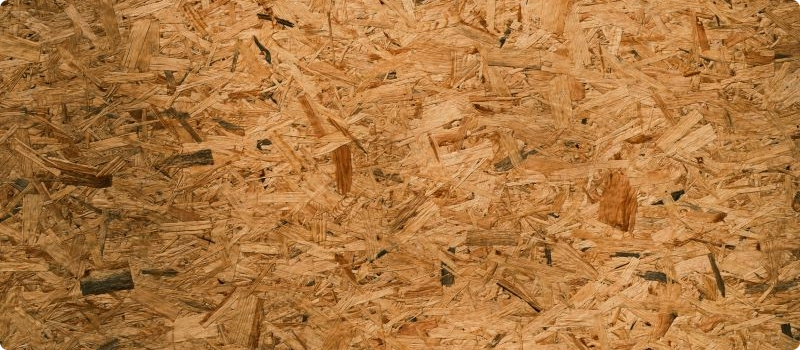
Structural insulated panels (SIPs). Structural Insulated Panels (SIPs) were first introduced in the building industry in the mid-1980s. Their design is simple: a core of rigid foam insulation sandwiched by oriented strand board (OSB). Technically, each one-piece building panel consists of a solid core of expanded polystyrene (EPS) foam sandwiched between “skins” of OSB, plywood, sheet metal, or gypsum. Each panel is produced in a factory-controlled setting in sizes ranging from 4ft x 8ft (1.2m x 2.4m) to 8ft x 24ft (2.4m x 7.2m).
SIPs can make up an entire structural assembly with little, if any, of other framing. SIPs can be used in the construction of residential homes, strip-mall buildings or small commercial projects. The properties of foam core panels vary, depending on size and thickness as well as the type of foam core and “skins” used.
See Construction Management Report CM-45-12, Structural Insulated Panels, for additional information.
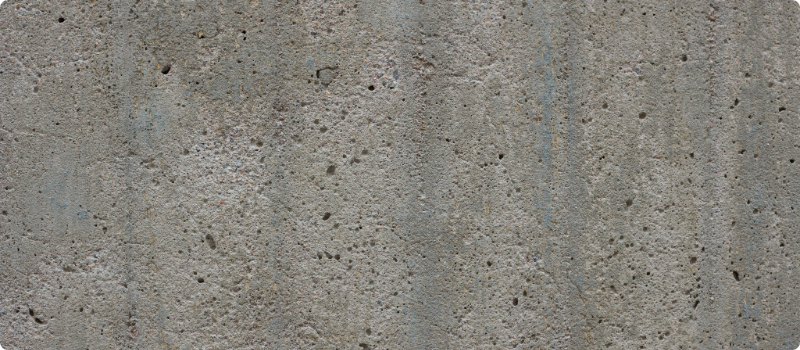
Insulating concrete forms. Insulating concrete forms (ICFs), are hollow foam blocks or panels that are stacked into the shape of the exterior walls of a building. Workers then pour reinforced concrete inside, creating a foam-concrete sandwich. Other material, such as recycled wood, polyurethane, and various cement mixtures, can also be used. The result is a wall that is exceptionally strong, energy-efficient, and durable and can be built in any style. The most commonly used materials for the blocks or panels are either expanded polystyrene foam or extruded polystyrene foam. The forms fit together with interlocking tongue and groove joints and are stacked according to the building design. If ties are required to hold the forms together, they are usually made of either metal or plastic.
See Construction Technology Report CT-40-07, Insulating Concrete Forms, for additional information.
Exterior insulation and finish systems (EIFS). In construction terms, Exterior Insulation and Finish Systems (EIFS) are known as "barrier-type systems." EIFS, also referred to as "synthetic stucco," are multi-layered exterior wall systems that are used on both commercial buildings and homes. While each EIFS differs in design, they typically consist of a polystyrene-based insulation board, a cementitious base coat reinforced by glass fiber mesh and an acrylic-based finish coat. The insulation board is glued or fastened to the underlying substrate, such as plywood, sheet metal, brick or stone, and the base and finish coats applied to complete the system.
EIFS that use a combustible insulation or substrate create an inherent fire hazard during construction. These materials may be exposed (sometimes for several weeks) during construction. To reduce the risk of fire, only the amount of combustible insulation that can be covered with the base coat in the same day should be installed.
See Construction Technology Report CT-30-04, Exterior Insulation and Finish Systems, for additional information.
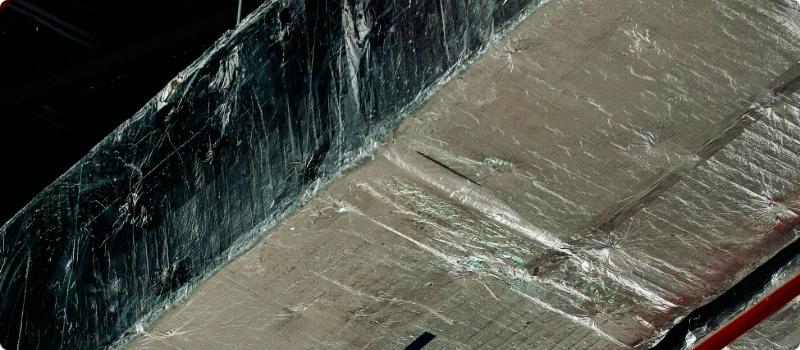
Reflective Foil Insulation
Reflective insulation is insulation (closed-cell foam, fiberglass, wool, etc.) covered by a reflective surface (foil) that is designed to both insulate from heat loss and reflect radiant heat back into the space. These coverings are often found in unfinished garages and other large spaces where reflection of radiant heat back into the space aids in temperature control.
Reflective insulations are categorized into two primary types: single-layer and multi-layer.Single-layer is actually a laminate consisting of a Kraft paper core faced on both sides with aluminum foil adhered to it with a fire-retardant (FR)-treated adhesive. Multi-layered foil usually consists of top and bottom layers of Kraft paper/aluminum foil laminates with the aluminum foil facing outward and multiple mid-layers aluminized i.e., (covered) Kraft paper. Each sheet is separated by a dead air space of approximately 1in (25mm).
Since the early 1980s, most reflective insulation has been treated with fire retardants. Reflective Insulation Manufacturers Association International (RIMA-I) provides technical specifications for reflective insulation on their website. The RIMA specifications require that products have a flame-spread rating of not more than 25, when tested in accordance with ASTM E84 - 11a, Standard Test Method for Surface Burning Characteristics of Building Materials. Another concern that has been theorized is that with the metallic coating being a conductor, a faulty or uninsulated wire in contact with the product can present a hazard. However, faulty wiring presents a hazard regardless of the insulation type, and the thinness of the foil may limit the ability of the product to carry any current by disintegrating.
In general, all insulation presents some degree of risk. Properly tested, installed and protected insulation provides only minimal risk of property loss. The manufacturers’ recommendations for installation and care of insulating materials, in addition to the requirements of code, should be followed.
For more information on loss control and managing business risks, check out the American Family Insurance Loss Control Resource Center.
This article is for informational purposes only and based on information that is widely available from sources not associated with American Family Mutual Insurance Company, S.I. nor its Operating Companies. While we do our best to provide helpful resources, we make no guarantees or promises about the reliability, accuracy, or any potential outcomes. This information does not, and is not intended to, constitute legal or financial advice. You should contact an appropriate professional for advice specific to your situation.
*Listed. Equipment, materials, or services included in a list published by an organization that is acceptable to the authority having jurisdiction and concerned with evaluation of products or services, that maintains periodic inspection of production of listed equipment or materials or periodic evaluation of services, and whose listing states that either the equipment, material, or service meets appropriate designated standards or has been tested and found suitable for a specified purpose.
References
1. Nola, Dennis. Encyclopedia of Fire Protection. Albany, NY: Delmar - Thompson Learning, 2001.
2. Engineering and Safety Service. An Overview of Fire Prevention and Fire Protection. FP-80-01. Jersey City, NJ: ISO Services, Inc., 2011.
3. ---. Fire Resistance and Construction Terminology. FP-32-01. Jersey City, NJ: ISO Services, Inc., 2010.
4. ---. The Spread of Smoke and Fire. FP-30-00. Jersey City, NJ: ISO Services, Inc., 2011.
5. Factory Mutual Engineering Corp. “Fire Resistance of Building Assemblies.” Loss Prevention Data Sheet 1-21. Norwood, MA: FM Global, 2012.
6. International Codes Council (ICC). International Fire Code. 2012 ed. Falls Church, VA: ICC, 2012.
7. National Fire Protection Association (NFPA). Fire Protection Handbook. 20th ed. Quincy, MA: NFPA, 2008.
8. ---. Products First Ignited in U.S. Home Fires, Statistical Analysis. Quincy, MA: NFPA, 2001.
9. ---. Uniform Fire Code. NFPA 1. Quincy, MA: NFPA, 2012.

